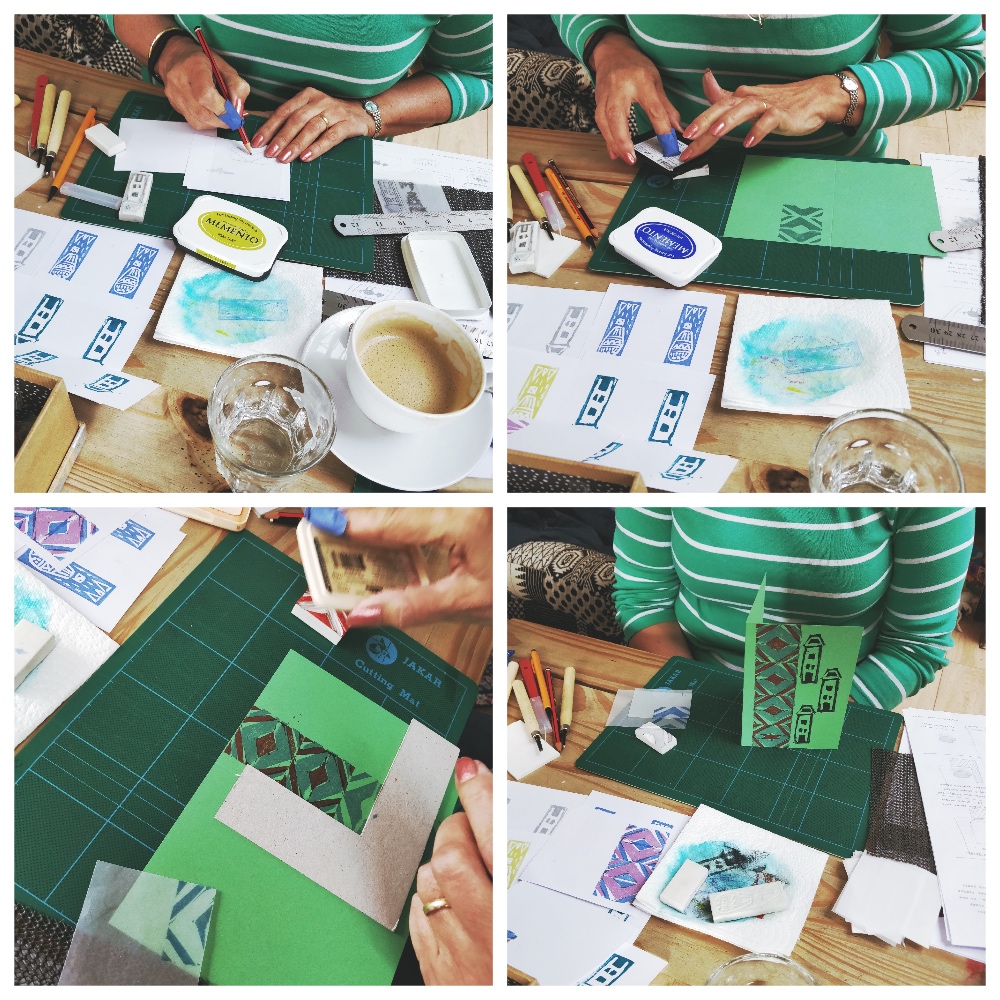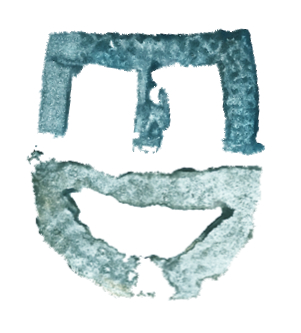Rubber stamp prints by Dave, Liz and Jacquetta
Do you remember the first mark That You made?
Mine was drawing on my bedroom wall when I was five. My mum was very generous and drew a square on the wall and said I could draw on the wall as long as it was inside that square. I was happy as long as I could keep on drawing.
Maybe yours was printing with potatoes. You sliced it in half, carved out a shape with a knife, dipped it in paint and printed it all over sheets of newsprint and maybe tried out a new pattern on the kitchen floor. Maybe you were four. Maybe ten. Maybe twenty.
When I went to art college I just wanted to draw and paint. I wasn’t interested in printing. My first memory of printing was with potatoes. I was in my early thirties and then I tried printing with rubbers and then lino and then letterpress and woodblock printing and I fell completely in love with whole process of printmaking.
We’ve all been making marks since the day we were born and if you can’t remember, it’s never too late to plant new memories.
Here are some rubber stamp prints made by Liz, Dave and Jacquetta who came to a recent rubber-stamp workshop at Salt cafe, Bristol. They really enjoyed having the time and space to have a stomping good stamp and no-one was under the age of thirty!
It’s never too late to make your mark
Dave’s cross and circle stamps
Jacquetta’s house and multicolour chevron stamps
Liz’s multicolour circle and square stamps
Potato Face by Mog







